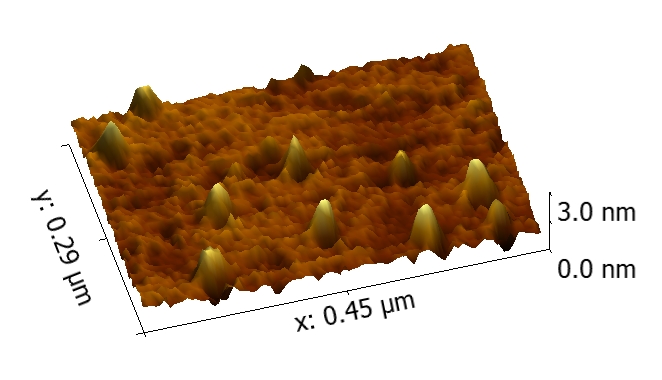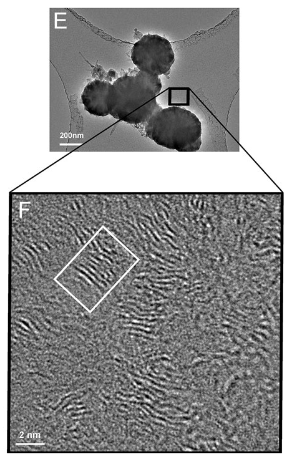‘Zero-dimensional’ carbon nanotubes may lead to superthin/superfast electronics and synthetic cells
Could also make it possible to build strong, ultralight cars, bridges, and airplanes
December 13, 2013

Piles
of zero-dimensional carbon nanotubes appear as gold “mountains” a few
nanometers high on a substrate, viewed by atomic force microscopy
(credit: University of Pittsburgh Swanson School of Engineering)
When created, single-wall carbon nanotubes (SWNTs) have a length-to-diameter ratio of up to 132,000,000:1 (think long wires that entangle, forming a one-dimensional structure). This clustering makes it difficult to achieve high purity, water solubility, and wet nanoscale applications, such a biological uses.
But what if the nanotube length could be reduced to roughly the size of its diameter — about 1 nanometer — thus creating a “zero-dimensional” carbon nanotube? That’s what Pitt researchers have achieved.
These extremely short nanotubes would be more soluble and would have the same dimensions as many proteins that compose the basic machinery of living cells. That suggests the potential for cell- or protein-level biomedical imaging, protein or nucleic acid vaccination carriers, drug-delivery vehicles, or even components of synthetic cells, the researchers say.
In addition, “zero-dimensional carbon nanotubes present the possibility to build ultrathin, superfast electronic devices, far superior to the best existing ones and it could be possible to build strong and ultralight cars, bridges, and airplanes,” said Steven R. Little, PhD, associate professor, CNG Faculty Fellow and Chair of the Department of Chemical and Petroleum Engineering, a principal investigator.
The researchers expect the process will be available commercially as soon as the process can be scaled up to manufacture bulk quantities, which is underway currently.
[+]

(E)
Aggregates of shortened nanotubes (scale bar = 200 nm). (F) Magnified
image of aggregates of shortened nanotubes (scale bar = 2 nm)
(¯`*• Global Source and/or more resources at http://goo.gl/zvSV7 │ www.Future-Observatory.blogspot.com and on LinkeIn Group's "Becoming Aware of the Futures" at http://goo.gl/8qKBbK │ @SciCzar │ Point of Contact: www.linkedin.com/in/AndresAgostini
 Washington
Washington